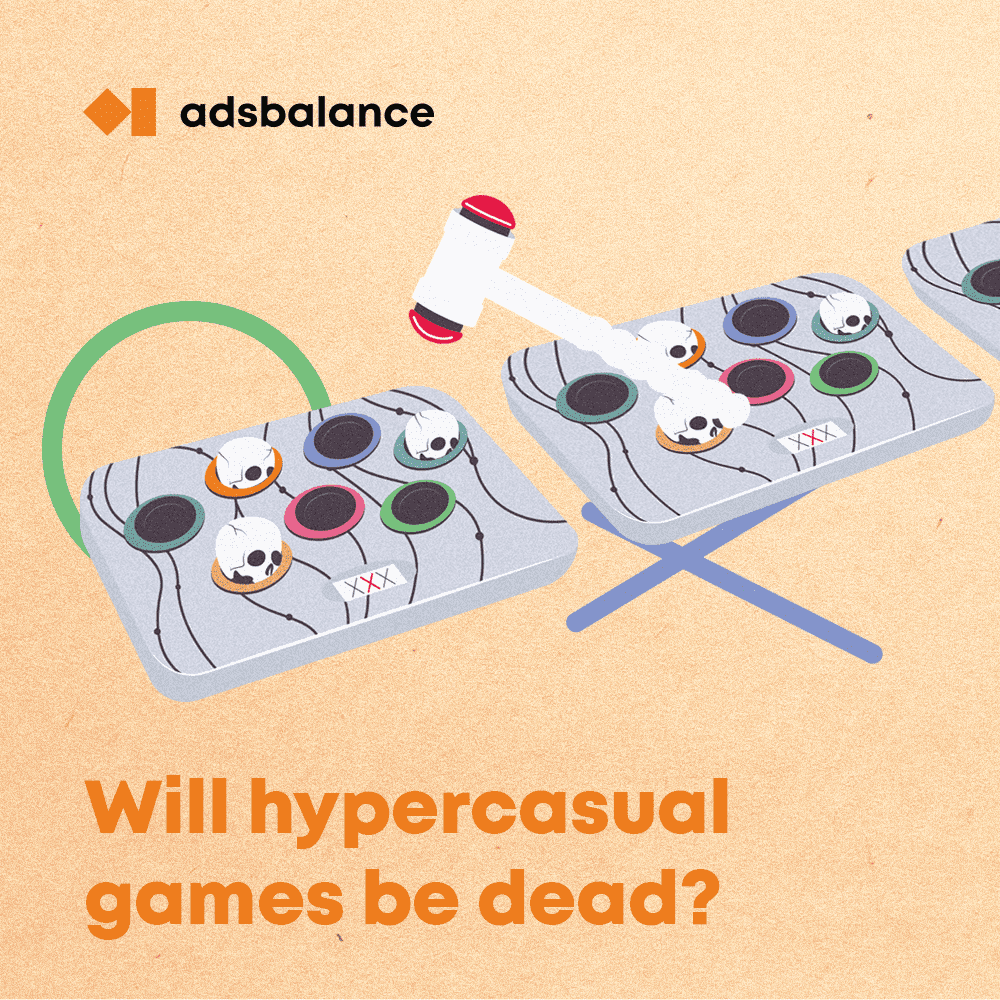
If you are a passionate mobile gamer, you think ‘they are loads of them, why would they be dead?’. Or, if you are an indie developer, you [might] think ‘there are loads of them, why would anyone make another one?’
In fact, that is a bit more complicated. Adjust (and they know for sure) report stated that the number of installs doubled in Q1 2020 with a clear influx of first-time users, and the sesion increased by 72%. You can blame the COVID-19 lockdown, but it could be other genres had the user got tired of hypercasual. Does it mean they’re not? Let us first take a look at the definition of hypercasual games. Strictly speaking, it can’t be called a separate genre, more like a set of features. But what are they? Well, we’ve sent a funny report that named those 4 apocalyptic horsemen: snackable, youtubable, satisfying and forgiving, but we also believe there’s more to it:
- Minimalistic design and gameplay.
You tap to play, and you usually need only one hand to do so (so that you may play anywhere and anytime, for example, while using public transport). Roughly, the first two are “snackable”.
There’s sound but it doesn’t contribute to gameplay much and you can mute it without sacrificing the efficiency or even the vibe of the game.
Straightforward gameplay. Here every second counts. However hard it might be to show the best result, the way of getting there must become pretty clear in the beginning. If a player doesn’t understand the mechanics in the first few seconds, you’ve lost them. The “round”/level time is also short to activate a fast “effort – positive reward” cycle. That stands for “youtubable”.
Suitable for non-gamers. No previous experience needed.
Slightly (or very much familiar) gameplay. First thing – players’ onboarding goes more smoothly when they see something they already know. You don’t question yourself when you see a pictogram of a man and a woman separated by a line in a square box (weird as it seems in writing, it’s an elevator), because those things are part of modern world, as well as the knowledge of what to do with the lines of the balls of the same color. Besides, it’s pretty hard to invent anything new in hypercasual, you know this if you have ever tried.
Addictive. Basically, every self-respecting game aims at being addictive, but here they use different tricks to make the user almost succeed and want to play one more round, feel that you’re almost there, close to a casino effect. The author of this has tried some top games of the genre and noticed that they try to fail your expectations, for example, you want to finish the session in a nice way, get a moderately good result or get lucky to get a new setting or reach a new level before you go, but they seem to stop you. That’s satisfying (well, as long as you’re able to reach the level) and also forgiving, since you can’t fail epically if your round lasts two minutes and it’s possible to replay and repay for anything after watching a 5-second ad.
Small size. Required for being fast to download (and try), also makes them appealing to those who have limited phone space.
Genderly neutral design.
Free to play (with loads of ads, you can’t throw the words out of a song).
So, is there any sense in making that kind of game?
Let’s see. First of all, many clones, already said hard to make something “completely different”.The user acquisition costs dropped slightly and are pretty low on the market, but the makers and publishers strive to reach a decent ARPU. Again, according to the report, the average ARPU is 0.13, and the top 25% of the games make $0.23 per user. The low end generated only 0.07 for player. Does that sound appealing for you? There’s rule that the more popular your game is, the higher is your ad revenue, so if you don’t aspire to be in the top store charts, chances are you’ll need to earn from in-app purchases.
Even this you can’t do without marketing investment and huge user acquisition campaigns. Today you need a pro buying team to grab your piece of audience cake, which only the majors can afford and not everyone of them even succeed. A month is usually enough to know if a game succeeds. No one improves a game of gives it a second chance after it proved low-profitable.They’d rather ask you to develop a new one in 2-3 months, this you need to be ready for.
We have some market insights telling us this type of games has enough time to earn so far, but in 2 or 3 years we’ll see a steady decline in the profits and, accordingly, in the number of new projects.
Do you have any hypercasual guilty pleasures, or do you not even feel guilty? Have you ever thought of making such games?




